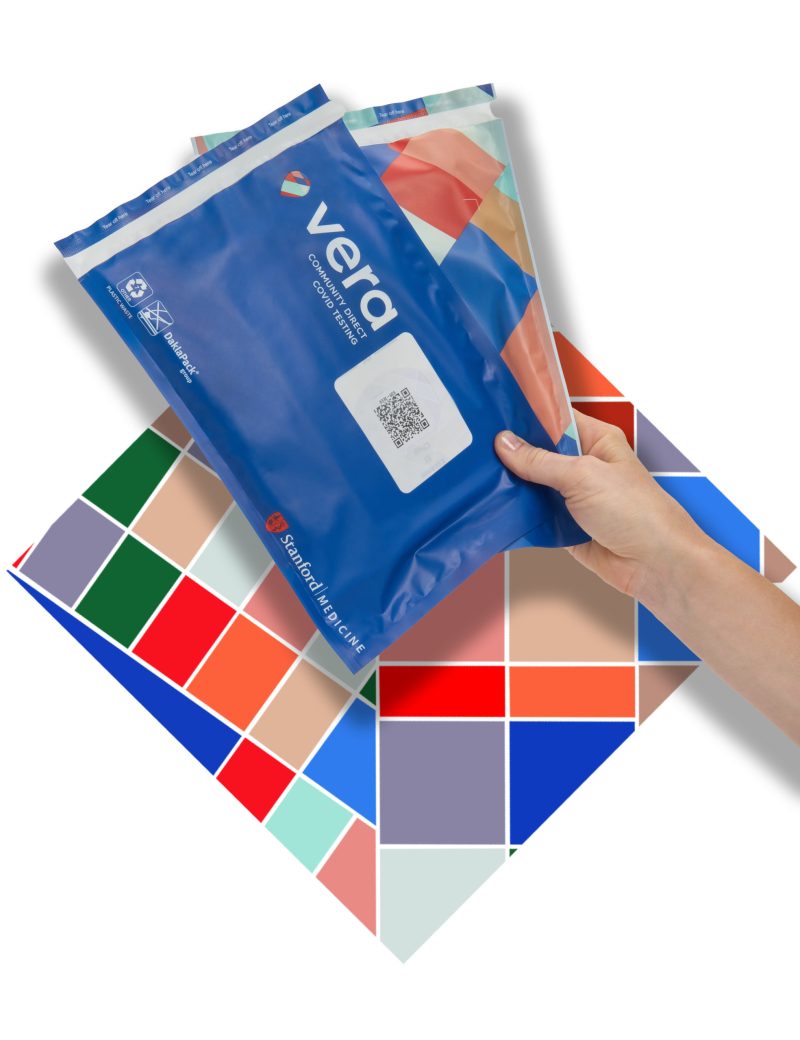Enroll an entire country on a COVID-19 tracking platform? Vera, a Stanford Medicine initiative backed by Silicon Valley philanthropy, pledges to deliver exactly that, and is enrolling participants for a pilot study in the Bay Area.
The initiative’s cofounders say their work is game-changing amid the growing pandemic. Technology that exists now is both limited in access and specific to the unique circumstances of the test and tested area, according to Vera founder and Stanford Board of Trustees Chair Jeffrey Raikes ’80. Vera creates a platform for national-scale disease testing.
Those using the platform — including Stanford Medicine — can open registration up to people in a certain area or demographic. Researchers can then choose to mail everyone who registered or a specific subset high-accuracy self-testing kits, which Vera coordinates. Vera then notifies recipients of their personal results and can aggregate anonymous population-level health data.
When asked if Stanford would utilize Vera’s capabilities for its winter reopening plans, Raikes said, “it’s certainly possible.”
Raikes, a former Microsoft president and one-time CEO of the Gates Foundation, conceived Vera while dining with Microsoft founder Bill Gates. Gates, who focuses his philanthropy on battling infectious diseases, saw the potential for a national crisis earlier this year.
“We created Vera after the first confirmation of community spread in February — community spread indicated the possibility of a national pandemic,” Raikes told The Daily. “Bill had actually sponsored a similar project for flu tests in the Seattle area a couple years prior, and we thought we should adapt that technology.”
Enlisting professors at Stanford, former colleagues at Microsoft and high-powered philanthropists including the Chan Zuckerberg Biohub and the Gates Foundation, Raikes said he competed against the clock to create his brainchild.
“The need was urgent — the result is quite a collaborative project,” Raikes said.
The Vera team lead, Pat Arensdorf MBA ’04, emphasized scale and interoperability as the platform’s primary advantages.
“If the entire U.S. population signed up in one day, we could handle it,” Arensdorf said. “We’re test agnostic, and also lab agnostic, whereas most solutions have been one-off and limited scope. Some companies have even reached out to use Vera for chronic disease testing and clinical trials.”
Yvonne Maldonado M.D. ’81, a School of Medicine professor and faculty development and diversity senior associate, serves as an advisor on the project and explained some day-to-day features: “A self-testing kit can be sent to and from participants’ homes by FedEx at a very low cost,” she said. “It’s entirely voluntary, and private information is protected. It’s essentially cost neutral, because we intend for it to be a public good.”
Vera is already being tested in a partnership with Stanford Medicine’s Community Alliance to Test Coronavirus at Home (CATCH) initiative as it gears up to scale nationally. CATCH aims to track the spread of COVID-19 in the broader San Francisco Bay Area by testing representative portions of the population.
CATCH uses the Vera platform to register participants. Owing to the promise of easy self-testing, CATCH is gaining widespread traction. In two weeks — from word of mouth alone — the initiative has received over 2,000 signups, according to Arensdorf.
Nevertheless, Raikes said there are larger plans for Vera, beyond Stanford and the Bay Area: “We envision Vera enabling safe reopening across the country,” Raikes said. “It could be used by public health agencies, school systems and even entire countries to track any disease transmission, not just COVID-19.”
Speaking to the practicalities of that vision, the team acknowledged that physical factors may constrain an aggressive testing strategy.
“Test delivery and laboratory processing are now the limiting factors,” Arensdorf said. “For CATCH, we’re using the Stanford laboratory. Outside the Bay Area, we’re looking for others to step up.”
With Vera enabling test management at scale, the team hopes it might finally bring the pandemic under control.
A previous version of this article misquoted Raikes on when Vera was created. It was after confirmation of community spread in February, not March. The Daily regrets this error.
Contact Yash Dalmia at ydalmia ‘at’ stanford.edu.
